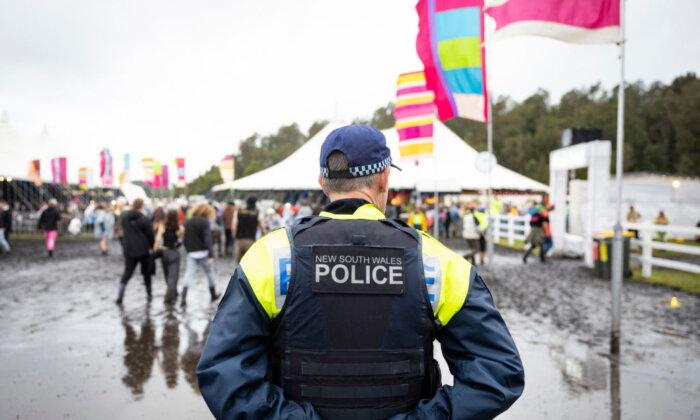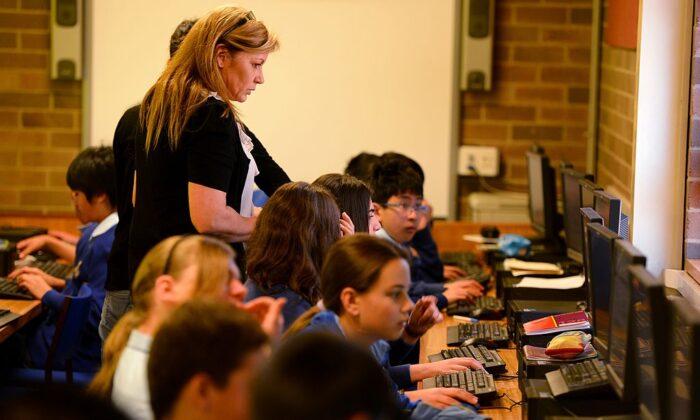Australians are visiting arts events and festivals less frequently, with price and location the main barriers to attendance, according to an arts survey released on Sept. 19.
Creative Australia released the 2022 National Arts Participation Survey. It provided the first comprehensive study of Australians’ engagement with arts and creativity since the COVID-19 pandemic, and the results are based on a nationally representative sample of 9,396 people.
Almost all Australians engage with the arts somehow; however, weekly event attendance dropped across all art forms compared to pre-COVID-19 pandemic rates, with more Australians only attending arts events every few months.
Creative Australia’s CEO Adrian Collette said although attendance is less frequent, “there has been a concurrent increase in the proportion of people who want to attend more.”
Entertainment, social connection, and a desire to understand other perspectives and cultures continue to be the most common reasons for attendance desire, and the pandemic likely contributed to this, according to the survey.
Almost half of Australians (48 percent) said creative activities and experiences helped their mental health or well-being during the pandemic.
As a result, Mr. Collette said Australians are now increasingly sharing, connecting, creating, and experiencing arts and culture online for well-being benefits. The survey showed almost nine in 10 Australians (88 percent) engaged with arts and culture online in 2022, up from 82 percent compared to 2019.

“Australians value the flexibility of accessing arts and creativity through digital avenues. However, a large proportion miss the atmosphere of a live event, exhibition, and experience when viewing online,” he said.
Further, many Australians recognise live arts and cultural events were heavily impacted by the COVID-19 pandemic disruptions and are willing to support the industry.
About seven million Australians (34 percent) aged 15 and over are happy to pay more for events to help support the arts sector. Over two in five young people (44 percent) aged 15 to 34 said they were willing while older Australians were less eager (36 percent aged 35 to 49 and 26 percent aged 50 and over).
Australians are also diversifying how they consume literature and increasingly use digital reading formats. At the same time, Australians’ engagement with reading has decreased slightly following the COVID-19 pandemic.
Of those who read, three in five Australians read ebooks, and a third of Australians listen to audiobooks.
“However, Australians likely use this format on an occasional, rather than regular basis as less regular consumption increased to 26 percent from 18 percent in 2019,” Mr. Collette said.

Boost For Australia’s Creatives
Following a change in arts consumption, the Albanese Labor Government announced investing $450,000 (US$290,000) in Creative Australia to support program delivery and to encourage more young Australians to pursue artistic endeavours on Sept. 13.The funding boost towards youth arts would provide more opportunities for young people to realise their creative potential and discover new and exciting avenues for cultural expression.
Arts Minister Tony Burke said young Australians contribute vitally to the arts scene, and “this funding will help more young people to explore the arts and find their voice.”
“I’m pleased that Creative Australia will be driving this investment in our future generation of artists,” Mr. Burke said.
The investment is part of Revive, a new National Cultural Policy released on Jan. 30 2023. It is a 5-year plan to renew and revive Australia’s arts, entertainment and cultural sectors, ensuring culture is re-positioned as central to Australia’s future.
The Albanese Labor Government also delivered almost $950 million in additional spending over four years to safeguard national arts institutions and train and support creators in the 2023-24 federal budget. The investment would support the $17 billion industry that employs more than 400,000 Australians.
Mr. Burke said $535.3 million would “secure the future of our most cherished cultural and historical institutions, addressing the decade of chronic underfunding that has left them in a state of disrepair.”
Further, $286 million would go towards establishing Creative Australia, Music Australia, Writers Australia, and Creative Workplaces Centre to support arts workers, a First Nations-led body dedicated to First Nations work, sharing the National Gallery of Australia’s collection with regional and suburban galleries and improving incomes for authors.
Over $9 million would support Australia’s eight national arts training organisations to secure critical training courses and skills development and maintain Australian trained in-demand performers and production specialists for live performing arts and screen industry.
Mr. Burke said after less than a year in office, the government has already delivered a comprehensive roadmap to lead the arts and culture sector to a better future.
“Artists and creators—from classical musicians to pub rockers, from First Nations designers to the illustrators of children’s books—know they finally have a Government that values and backs them as workers, not hobbyists. Labor is delivering a new chapter in Australia’s cultural story.”







